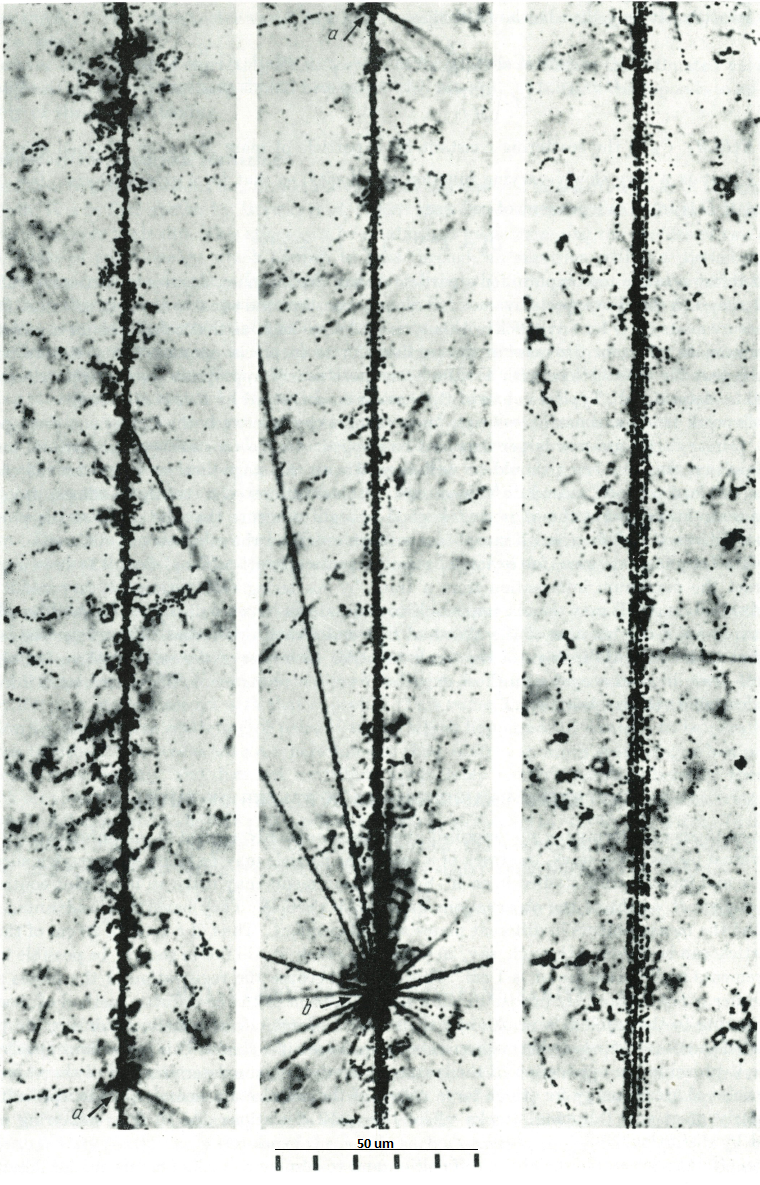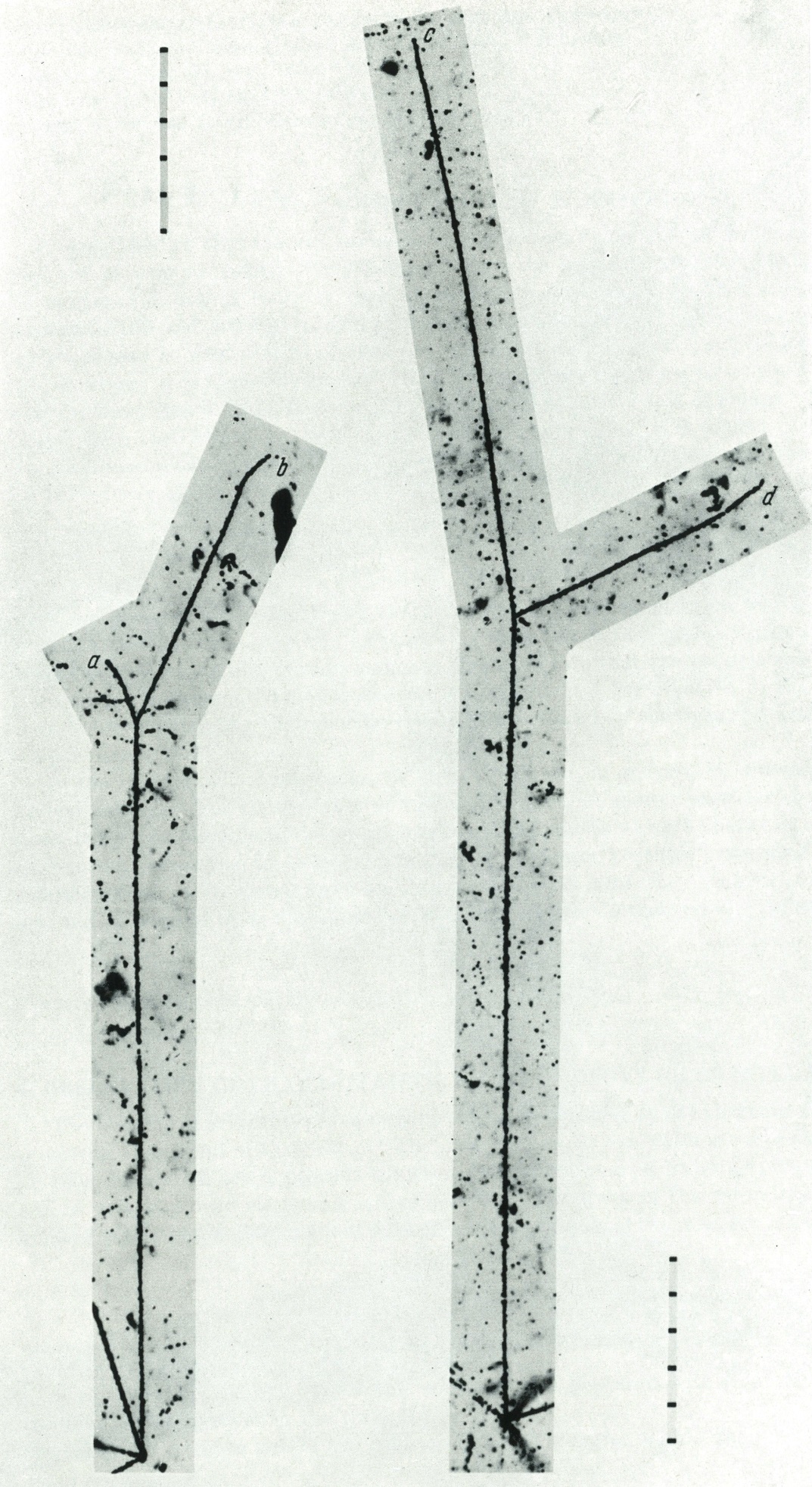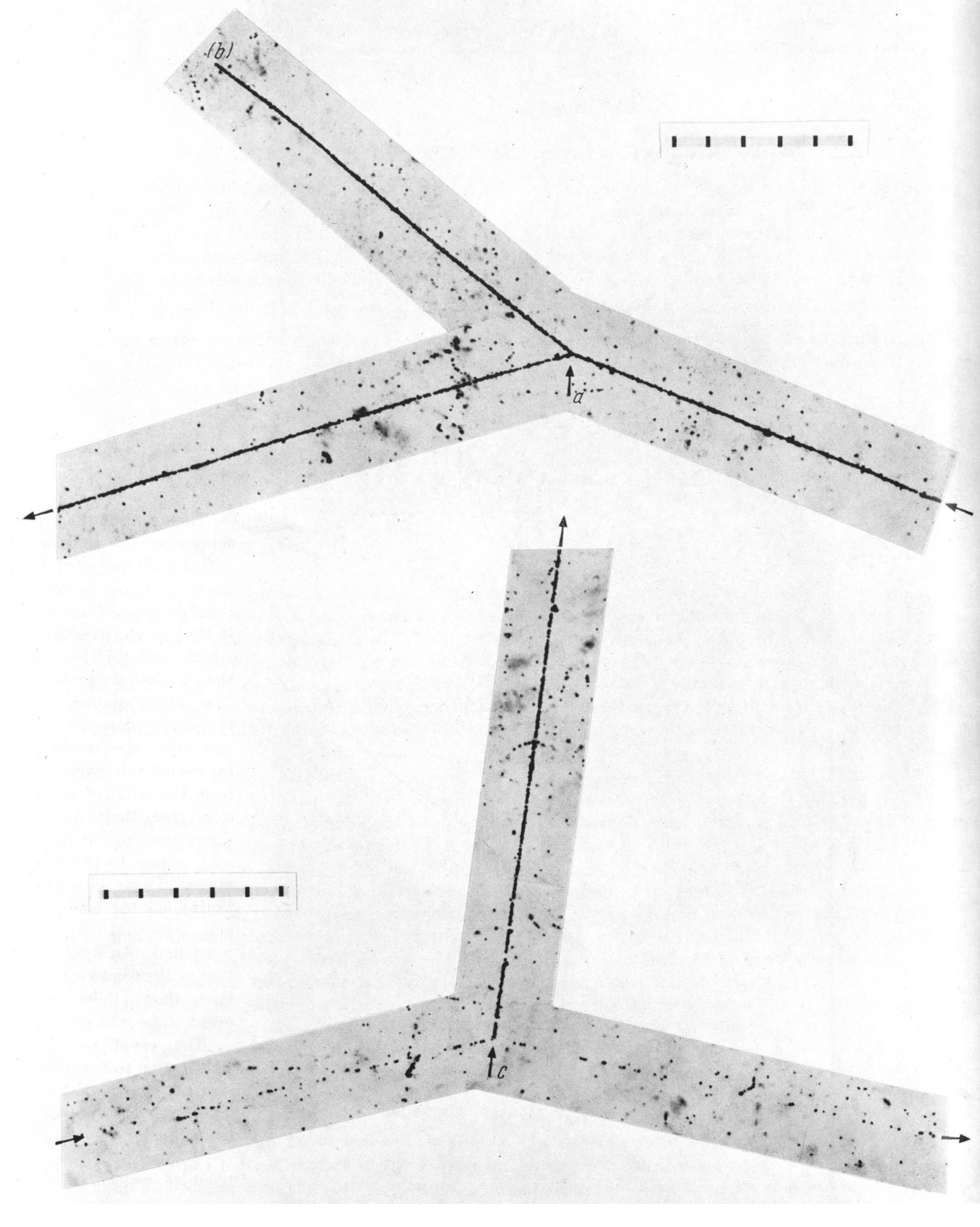Pictures of heavy particle into stationary targets in nuclear emulsions photographs.

Fragmentation by collision of a Calcium nucleus. The incoming particle comes from the top in the left picture and the residual fragments continue their path in the middle then right picture.
In this event, shown in three overlapping photographs ; a nucleus with Z ~20 (Calcium) make a glancing collision with a nucleus in the emulsion at point ‘a’ lower left and upper centre. Emerging from the encounter are about 20 fast singly charged particles, together with a ‘jet’ of 4 or 5 relativistic α particles and a heavier fragment. Before the particles in this jet have diverged sufficiently to allow the individual tracks to be identified, one of the particles makes the prominent nuclear disintegration of a silver or bromine nucleus, seen at ‘b’. Careful study under the microscope shows that the collision at ‘b’ was probably made by an α-particle, and not by the heaviest member of the jet. After the disintegration at ‘b’, the remaining fragments of the first collision at ‘a’ diverge sufficiently to allow their identification, and they are found to be an oxygen nucleus accompanied by four α-particles. There is a great reduction in the number of δ-rays associated with the unresolved jet of secondary particles, immediately after the collision at ‘a’, as compared with that of the primary particle, although the total charge of the secondaries is not less than that of the primary. This result provides a good illustration of the fact that the value of nδ depend on Z².
The event on the left represents the collision with a stationary proton in the emulsion of a proton emitted from a nuclear disintegration. Track (a) is that of the recoiling triton, and (b) that of the projected proton. The interpretation of the event depends on measuring the residual ranges of the particles from the point of collision, and their initial direction of motion with respect to the primary. The event on the right is due to the collision of an incoming α-particle (track c) with a proton (d). The scale is 50 μm. In elastic collisions and for non-relativist velocities, measuring the angles of the projected particle give an indication of the mass ratio of particles (clik on image for demonstration) :
The upper photograph shows the collision of a deuteron with a proton at the point (a), the recoiling proton producing the track (b). The lower event is due to the collision of a fast pion π with a proton.


